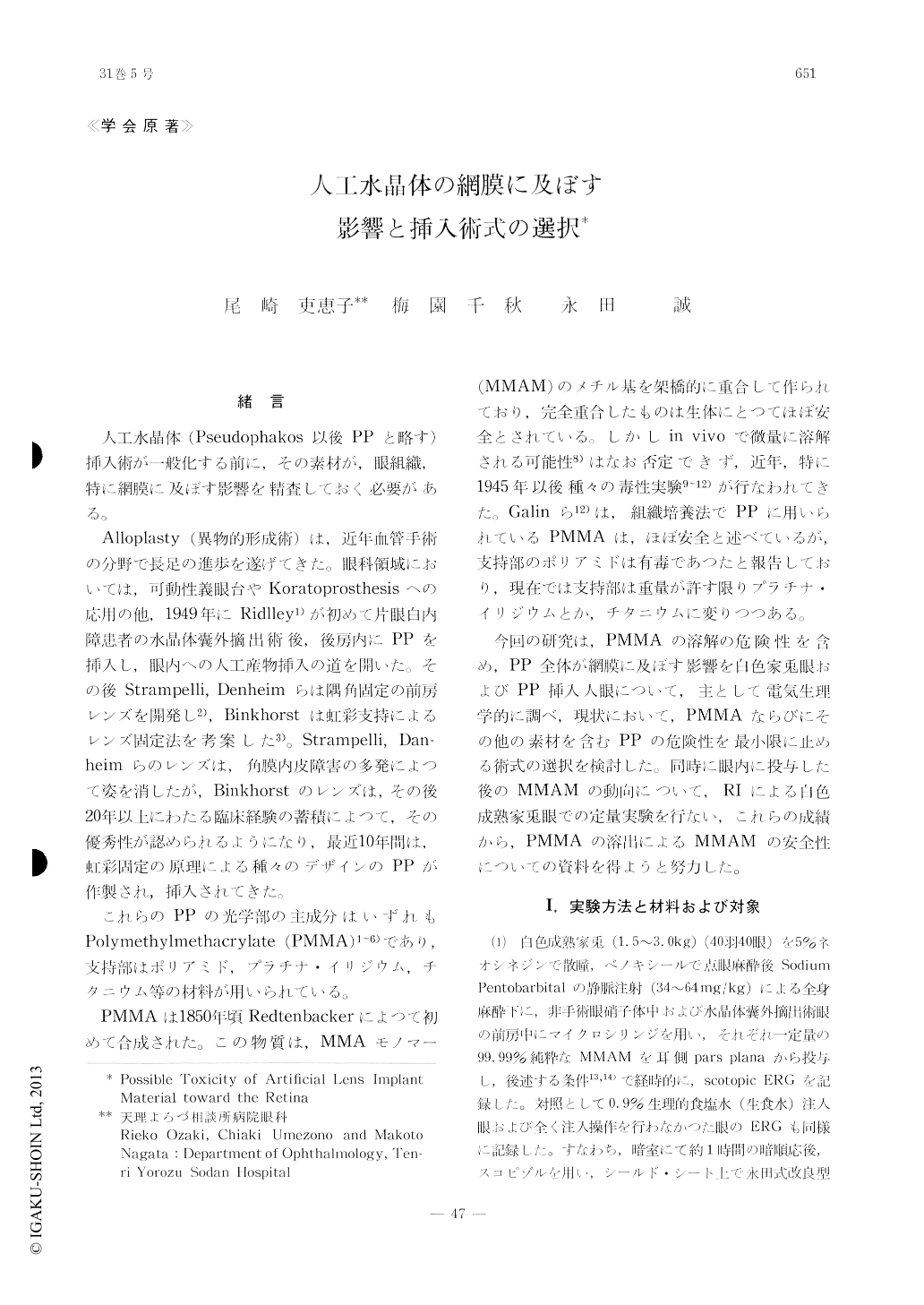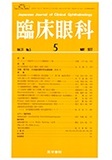Japanese
English
- 有料閲覧
- Abstract 文献概要
- 1ページ目 Look Inside
緒 言
人工水晶体(Pseudophakos以後PPと略す)挿入術が一般化する前に,その素材が,眼組織特に網膜に及ぼす影響を精査しておく必要がある。
Alloplasty (異物的形成術)は,近年血管手術の分野で長足の進歩を遂げてぎた。眼科領域においては,可動性義眼台やKoratoprosthesisへの応用の他,1949年にRidlley1)が初めて片白内障患者の水晶体嚢外摘出術後,後房内にPPを挿入し,眼内への人工産物挿入の道を開いた。その後Strampelli, Denheimらは隅角固定の前房レンズを開発し2),Binkhorstは虹彩支持によるレンズ固定法を考案した3).Strampelli, Dan-heimらのレンズは,角膜内皮障害の多発によつて姿を消したが,Binkhorstのレンズは,その後20年以上にわたる臨床経験の蓄積によつて,その優秀性が認められるようになり,最近10年間は,虹彩固定の原理による種々のデザインのPPが作製され,挿入されてきた。
Fully polymerized methylmethacrylate (PM-MA) is the main component of the artificial lens and has been considered to be non-toxic based on tissue culture studies. Because it is possible that a small amount of methylmetha-crylate monomer (MMAM) is solubilized in the eye and exerts toxic effects towards the retina, we conducted animal experiments to clarify this point.
Rabbits were studied electroretinographically after injection of 10 cμm of MMAM, a volume equivalent of an artificial lens, into the anteriorchamber following extracapsular lens extraction.

Copyright © 1977, Igaku-Shoin Ltd. All rights reserved.


